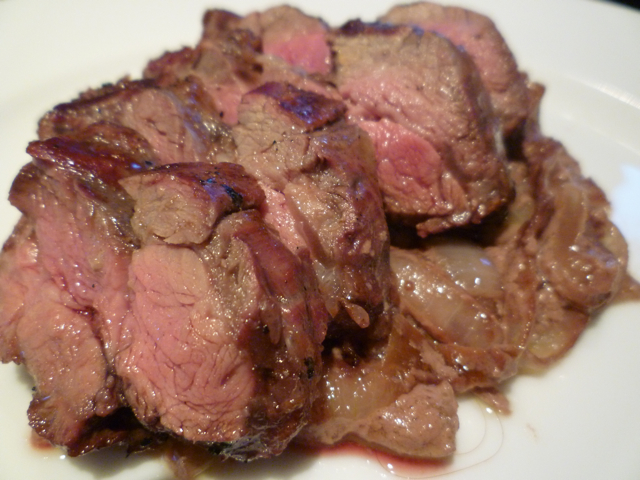
Always interested in expanding my culinary horizons, when I am at the market I am immediately drawn to any food I haven’t yet had the opportunity to cook. This week at the Newburyport Farmer’s Market I was able to purchase locally raised goat meat. So guess what was on the menu last night!
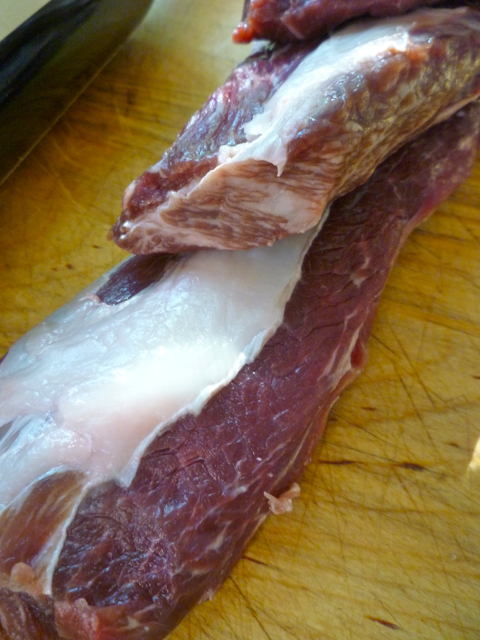
I purchased the meat from Riverslea Farm, in Epping, NH. Riverslea is owned and operated by Jeff and Liz Conrad, who started out in 1991 and today raise both sheep and goats for the sale of meat, skins and wool. They sell naturally raised meat animals directly to the public, as well as washable sheepskins and wool products their farm shop and by mail.
They began their goat herd with Nubians, excellent milk producers, and Alpines, another hardy dairy breed. In 1996, they introduced South African Boer in order to get a meatier animal. Today, they breed 40 crossbred does exclusively with Boer bucks, producing goats with extremely lean and tender meat. They had a variety of cuts available, but as it is July, I was more interested in something that could be cooked quickly on the grill, rather than slow and low. I asked if they had any cuts they would recommend on the grill, and ended up purchasing 4 strip steaks.
I did a bit of research on goat meat, and how best to cook it, before diving in. Interestingly enough, goat is actually the world’s most popular meat, with 75% of the world’s population eating it. This fact appeared in several places on the web, including this article in the New York Times. It is growing in popularity here in the US, with demand being driven both from ethnic groups who enjoy it as part of their traditional cuisine, as well as some high end chefs and producers – like NYC chef Scott Conant, and Niman Ranch – who are specializing in it. It is often called chevon or mutton when the meat comes from adults, and cabrito or kid when from young animals.
I leaned that goat meat is very lean, over 50% leaner than beef, and 40% leaner than chicken, even with the skin removed. The lack of fat does mean it should be cooked with a bit of care, and not just like a steak. Leaner cuts can tend to dry out quickly while cooking, so cooking with moist heat rather than dry is usually recommended. If grilling, which is pretty dry, a lower heat is suggested, with some marinating.
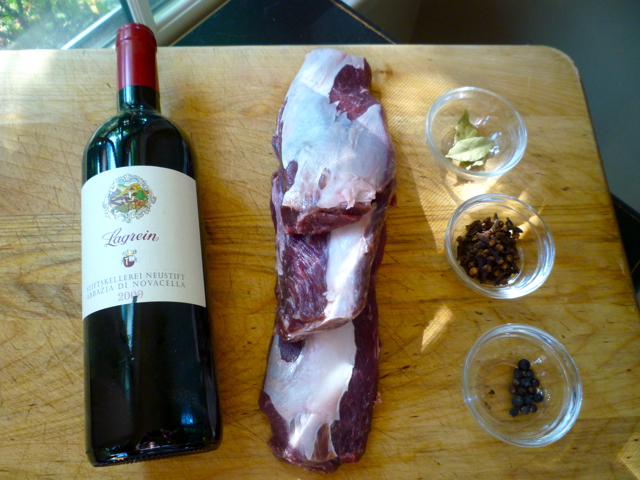
In Italy, goat is most popular in the south, with it most commonly being roasted whole. There are several recipes I found in La Cucina: The Regional Cooking of Italy for goat, most requiring slow cooking. I ended up adapting a recipe from Sudtirol for my goat steaks, a traditional recipe for chamois (Chamois alla Tirolese), which I am pretty sure I’m not going to find here in the US anytime soon. Chamois is a goat antelope species, native to the mountains of Europe, including the Alps. They live at moderately high altitudes and are adapted to living in precipitous, rugged, rocky terrain, like you will find in Alto Adige. They spend their summers above the tree line in meadows, and when winter rolls around, they go to lower elevations to live in forests, mainly in areas dominated by pines. As with goat, they are an extremely lean meat.
I used the flavors from the original recipe – bay leaves, cloves, juniper berries, Lagrein wine – to create a marinade. I grilled the steaks, and turned the marinade into a pan sauce.
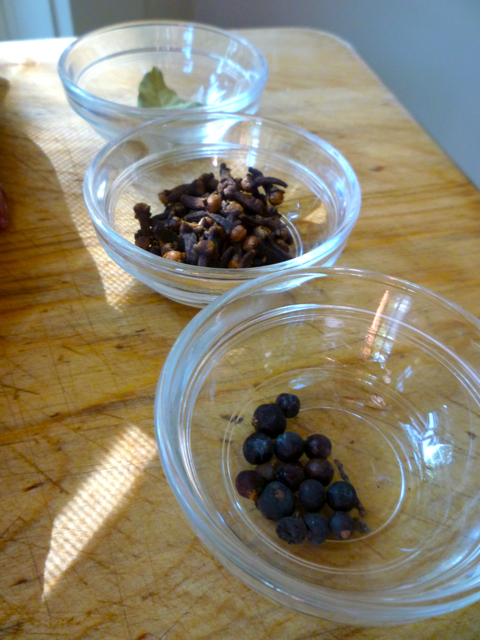
One note on cooking goat, there is a silver skin that should be removed prior to cooking. Silver skin is a thin membrane with a silvery sheen. It does not break down during the cooking process, and can be a bit tough, so is best removed. This is quite easy to do with a sharp knife. Stick the blade of a thin knife under the middle of the silver skin, making a slit. Slide your knife toward the end of the silver skin, pulling up a bit while pushing forward. The silver skin should come away from the meat underneath in a long strip. Turn the meat 180°, and do the same to the other side. Continue until all the silver skin has been removed. If your meat is frozen, removing the silver skin becomes even easier if you do it before the meat has completely defrosted.
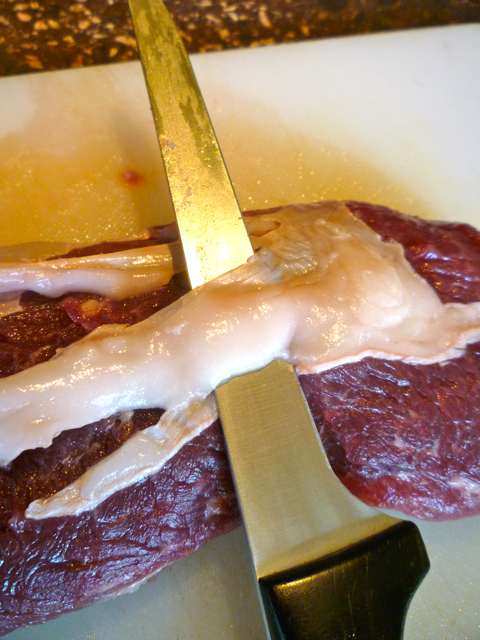
This recipe would work with any meat, especially leaner cuts like venison, buffalo, and elk. It was a very flavorful meat, a bit chewier frankly than a steak, but we don’t use (or even have) steak knives, and was easily cut with a regular table knife. I definitely will be returning for more!
Capretto alla Tirolese
2 lbs. goat strip steaks
2 bay leaves
7 juniper berries
4 whole cloves
Pinch fresh thyme leaves
2 cups red wine, preferable Lagrein
1 cup vinegar
1 tablespoon butter
1 tablespoon olive oil
1 large onion, thinly sliced
1/2 cup heavy cream, acidulated with 1 tablespoon lemon juice, or sour cream
Remove the silver skin from the steaks, and place in a sealable plastic bag.
Combine the bay leaves, juniper berries, cloves, thyme, red wine and vinegar in a small bowl. Pour over the goat, seal the bag and refrigerate. Marinate for up to 24 hours.
Preheat the grill to medium.
Place the butter and olive oil in a medium saute pan, and heat over medium high heat. When the butter is melted and hot, add the onions and cook until softened and beginning to brown, about 10 minutes.
Remove the goat from the marinade, and place the steaks on a sheet pan. Season with salt and pepper.
